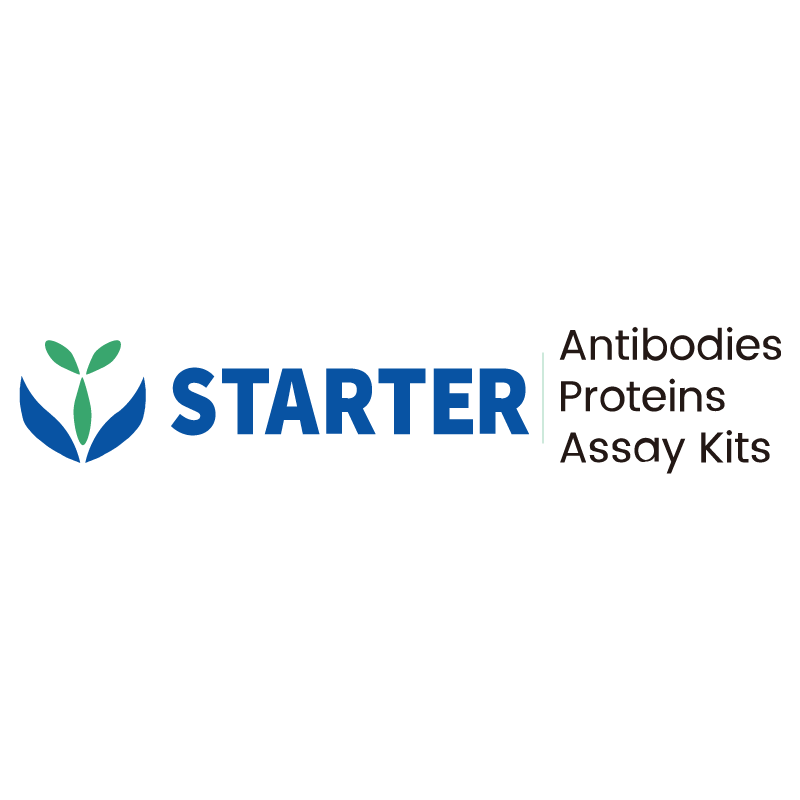WB result of CACNA1S Recombinant Rabbit mAb
Primary antibody: CACNA1S Recombinant Rabbit mAb at 1/1000 dilution
Lane 1: rat skeletal muscle lysate 20 µg
Secondary antibody: Goat Anti-rabbit IgG, (H+L), HRP conjugated at 1/10000 dilution
Predicted MW: 212 kDa
Observed MW: 212 kDa
This blot was developed with high sensitivity substrate
Product Details
Product Details
Product Specification
| Host | Rabbit |
| Antigen | CACNA1S |
| Synonyms | Voltage-dependent L-type calcium channel subunit alpha-1S; Calcium channel; L type; alpha-1 polypeptide; isoform 3; skeletal muscle; Voltage-gated calcium channel subunit alpha Cav1.1; CACH1; CACN1; CACNL1A3 s |
| Immunogen | Synthetic Peptide |
| Location | Cell membrane |
| Accession | Q13698 |
| Clone Number | S-2448-78 |
| Antibody Type | Recombinant mAb |
| Isotype | IgG |
| Application | WB, IHC-P |
| Reactivity | Hu, Ms, Rt |
| Positive Sample | Human skeletal muscle, mouse skeletal muscle, rat skeletal muscle |
| Predicted Reactivity | Rb |
| Purification | Protein A |
| Concentration | 2 mg/ml |
| Conjugation | Unconjugated |
| Physical Appearance | Liquid |
| Storage Buffer | PBS, 40% Glycerol, 0.05% BSA, 0.03% Proclin 300 |
| Stability & Storage | 12 months from date of receipt / reconstitution, -20 °C as supplied |
Dilution
| application | dilution | species |
| WB | 1:4000 | Rt |
| IHC-P | 1:500 | Hu, Ms, Rt |
Background
The CACNA1S protein is a crucial component of the voltage-dependent L-type calcium channel, specifically the alpha-1 subunit, which plays a vital role in excitable cells such as skeletal muscle and cardiac muscle. This protein is encoded by the CACNA1S gene and is responsible for regulating the flow of calcium ions into cells, thereby influencing muscle contraction and other physiological processes. Mutations in the CACNA1S gene can lead to various disorders, including hypokalemic periodic paralysis and malignant hyperthermia susceptibility, highlighting its significance in maintaining normal muscle function and homeostasis.
Picture
Picture
Western Blot
Immunohistochemistry
IHC shows positive staining in paraffin-embedded human skeletal muscle. Anti-CACNA1S antibody was used at 1/500 dilution, followed by a HRP Polymer for Mouse & Rabbit IgG (ready to use). Counterstained with hematoxylin. Heat mediated antigen retrieval with Tris/EDTA buffer pH9.0 was performed before commencing with IHC staining protocol.
Negative control: IHC shows negative staining in paraffin-embedded human cerebral cortex. Anti-CACNA1S antibody was used at 1/500 dilution, followed by a HRP Polymer for Mouse & Rabbit IgG (ready to use). Counterstained with hematoxylin. Heat mediated antigen retrieval with Tris/EDTA buffer pH9.0 was performed before commencing with IHC staining protocol.
Negative control: IHC shows negative staining in paraffin-embedded human lung adenocarcinoma. Anti-CACNA1S antibody was used at 1/500 dilution, followed by a HRP Polymer for Mouse & Rabbit IgG (ready to use). Counterstained with hematoxylin. Heat mediated antigen retrieval with Tris/EDTA buffer pH9.0 was performed before commencing with IHC staining protocol.
IHC shows positive staining in paraffin-embedded mouse skeletal muscle. Anti-CACNA1S antibody was used at 1/500 dilution, followed by a HRP Polymer for Mouse & Rabbit IgG (ready to use). Counterstained with hematoxylin. Heat mediated antigen retrieval with Tris/EDTA buffer pH9.0 was performed before commencing with IHC staining protocol.
IHC shows positive staining in paraffin-embedded rat skeletal muscle. Anti-CACNA1S antibody was used at 1/500 dilution, followed by a HRP Polymer for Mouse & Rabbit IgG (ready to use). Counterstained with hematoxylin. Heat mediated antigen retrieval with Tris/EDTA buffer pH9.0 was performed before commencing with IHC staining protocol.


